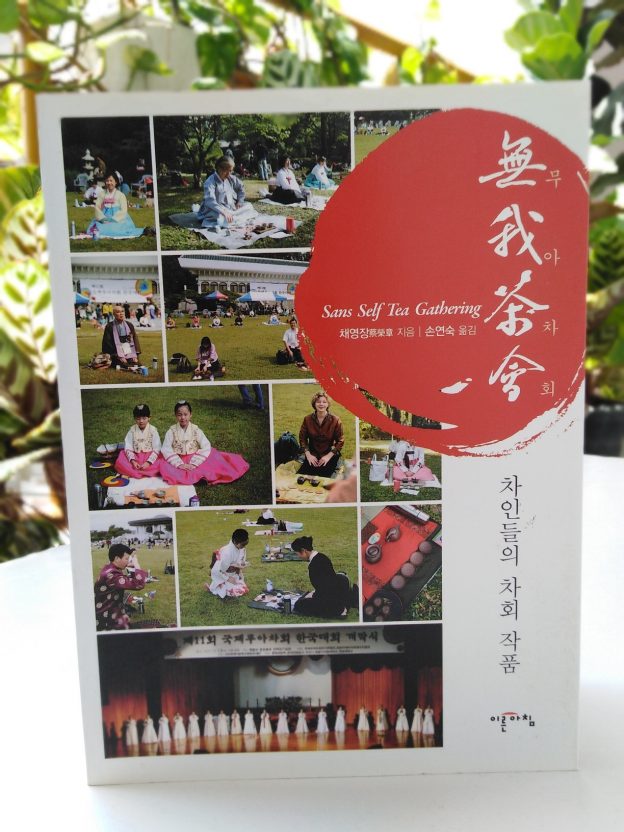無我茶會表現的茶道藝術
The artistic manifestation of the Way of Tea as expressed by Sans Self Tea Gathering
蔡荣章 Rong-tsang Tsai
Student: ‘As far as the Way of Tea is concerned, what is the difference between Sans Self Tea Gathering and other ways of making tea?’
‘Sans Self Tea Gathering is a form of tea gathering. It differs from the ten brewing methods we talk about from time to time; those are ways in which we make tea. Besides Sans Self Tea Gathering, there are also tea gatherings in the form of tea presentation setting, banquet or free-flow. Meanwhile, as you all know, brewing methods may involve small teapots, big containers or extended steeping of tealeaves, to name a few.’
‘In the artistic manifestation of the Way of Tea, the method of brewing is an application. How about the different kinds of tea gathering? ’
‘They are both applications in the artistic manifestation of the Way of Tea. Tea gathering is the style, brewing method is the means.’
‘Is the format of tea gathering and tea presentation setting the same as the “environment for tea drinking”?’
‘These are different concepts. The artistic manifestation of the Way of Tea should not be too dependent on, or too mindful of, the environment for tea drinking; otherwise, we will forget that we are brewing tea. The format of tea gathering, however, has an immediate impact on the art itself – the way tea ware affects the tea infusion and the brewing method the enjoyment of tea. The format of tea gathering should not be viewed as an environment for tea drinking; but rather, a part of the artistic manifestation of the Way of Tea.
‘Where lies the beauty of Sans Self Tea Gathering, apart from its role in the artistic manifestation of the Way of Tea?’
‘Although there is no event director on site, a Sans Self Tea Gathering takes place like clockwork. Each participant brews tea, then rise to serve tea to fellow participants on their left or right. After taking the first brew, each prepares another brew and serve, until the agreed number of brewing has been attained. After staying at their places for a short music appreciation, the participants go forth to collect their cups and pack. That’s when the tea gathering comes to an end. Throughout the tea gathering, no one speaks or directs the event flow; everyone follows the pre-agreed procedure and method. Such is the collective rhythm of Sans Self Tea Gathering – when all the participants put their heart and soul into brewing, serving and enjoying tea, a kind of beauty unique to the Way of Tea prevails.’
‘Would it be possible to look upon the entire tea gathering, from tea setting through tea brewing and serving to taking the tea, as a piece of work?’
‘Experiencing, or rather enjoying, the art of the Way of Tea is certainly realized by the entire tea gathering. The only worry is over emphasizing the impact of the event at the expense of the tea infusion; and the worry is real. Because of this, we have proposed the concept of the ‘Quintessential Way of Tea’, which helps us re-focus on the tea infusion. Tea, after all, is at the core of the artistic manifestation of the Way of Tea. This way, it won’t be mistaken as the art of tea drinking environment, the art of tea brewing or the art of moral enlightenment. You may say: Well, ain’t I making tea just the same? True, but the pre-requisite is the realization that tea, the infusion, is at the heart of the Way of Tea.
(1531)


